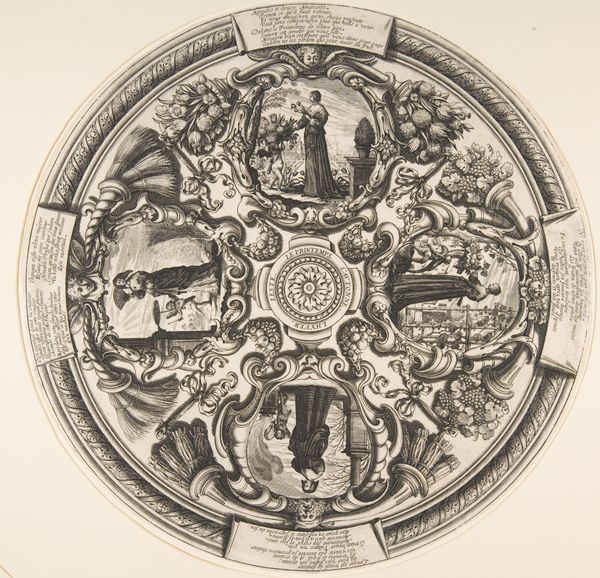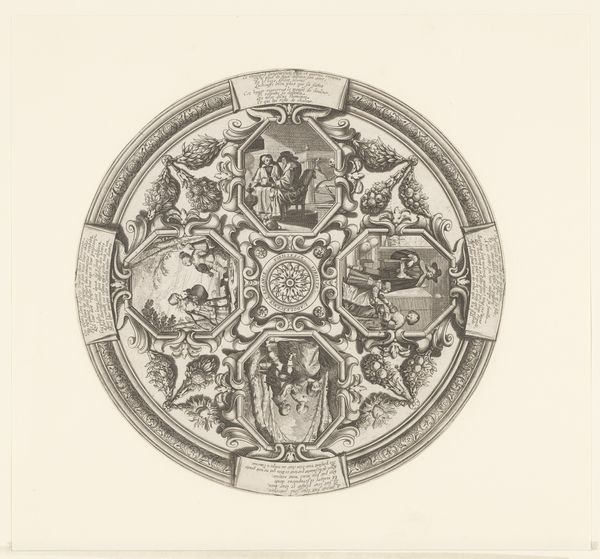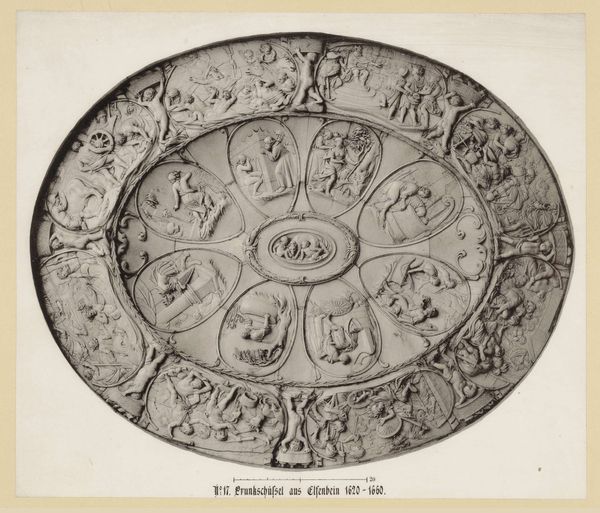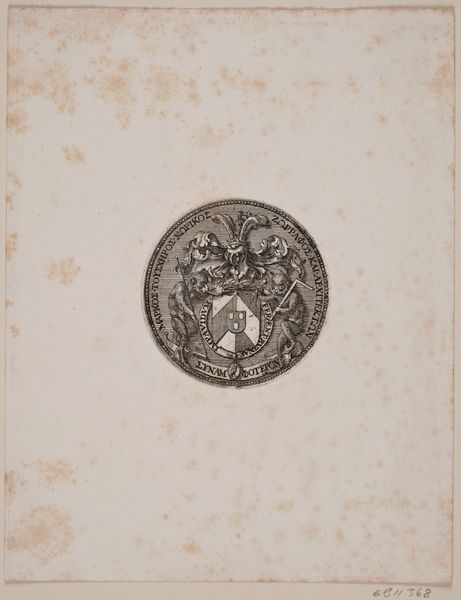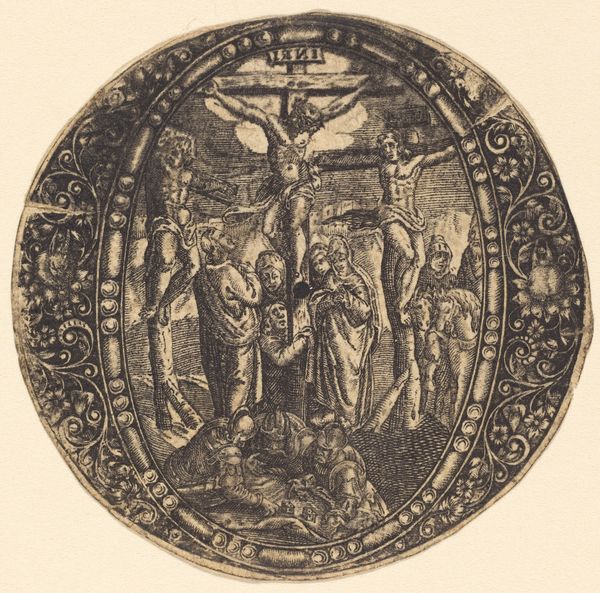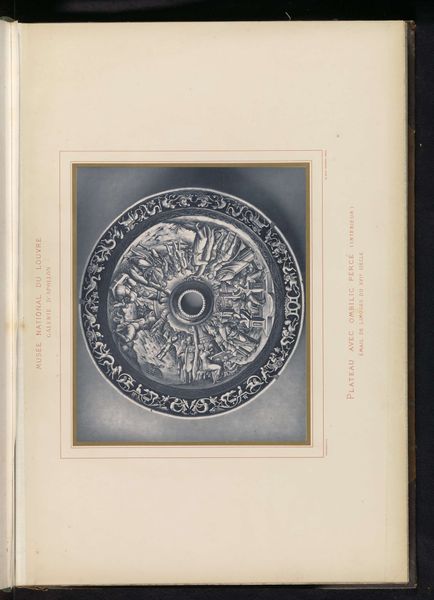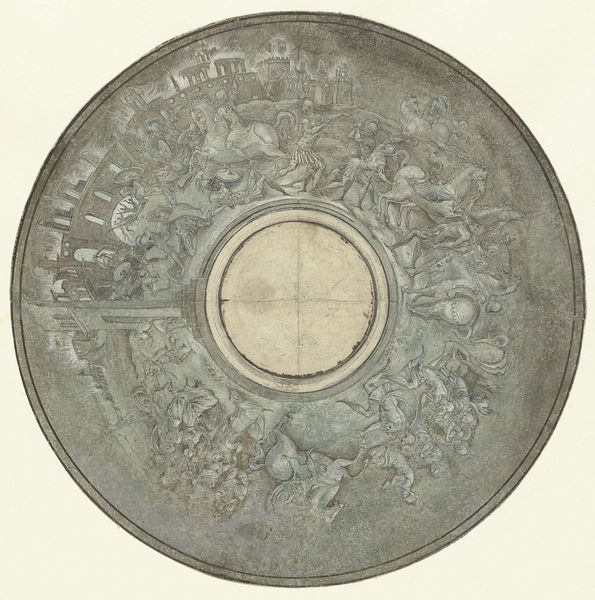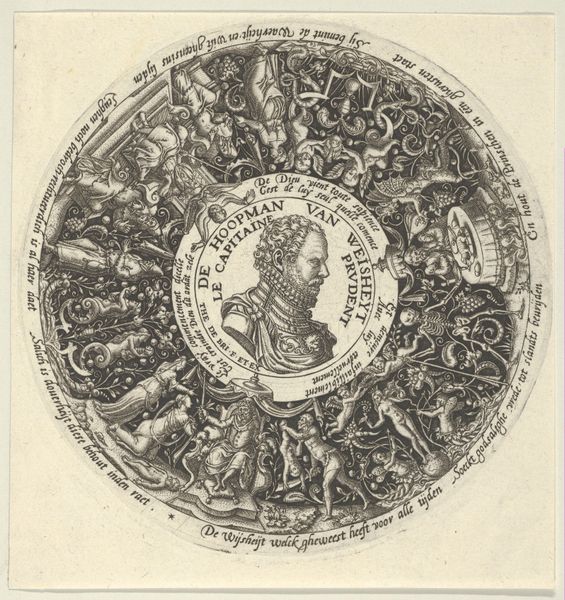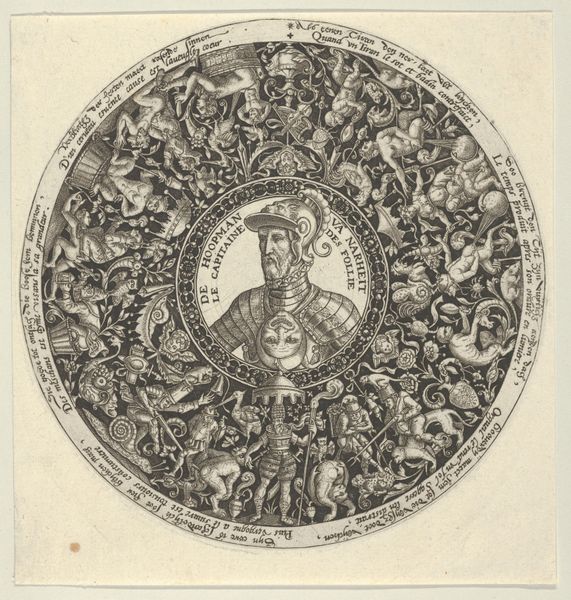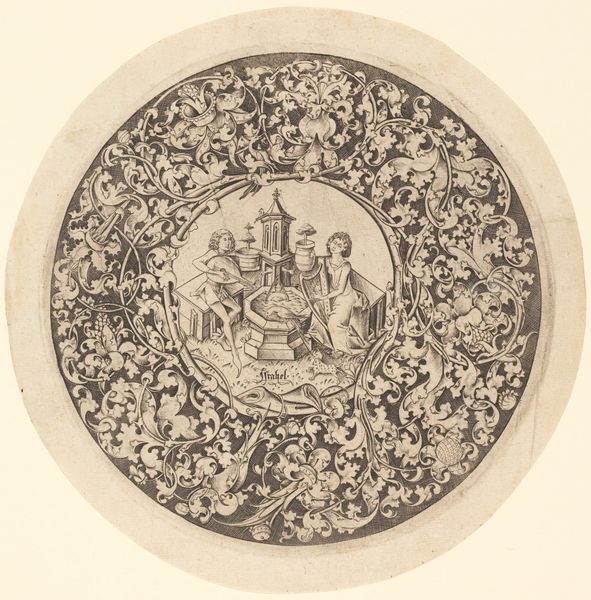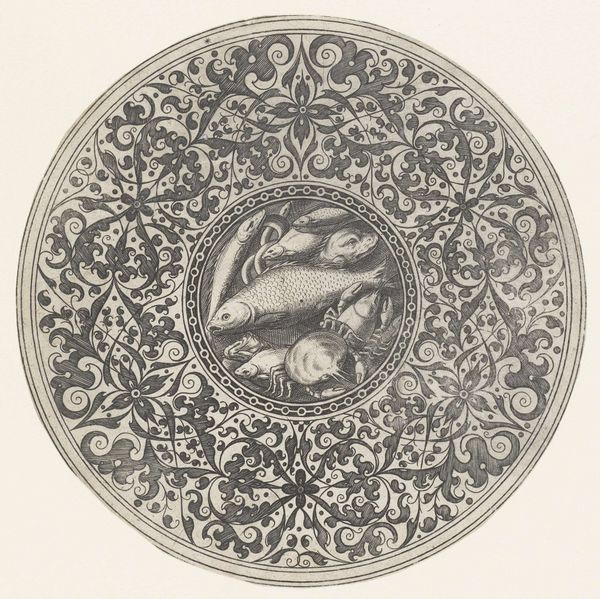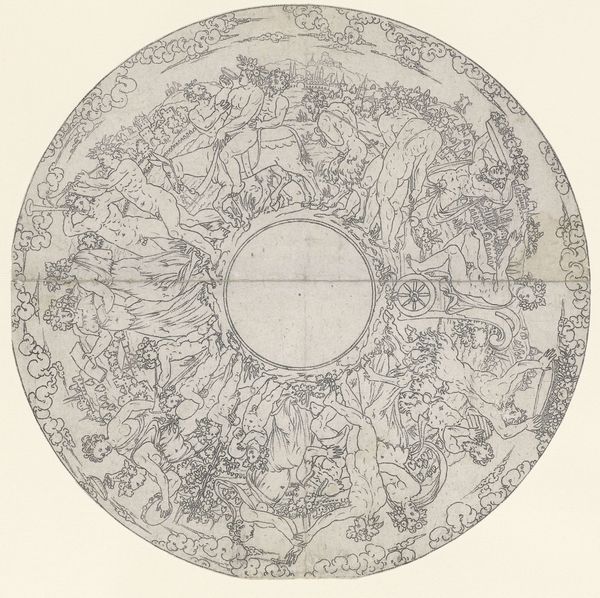
print, metal, engraving
# print
#
metal
#
old engraving style
#
geometric
#
history-painting
#
engraving
Dimensions: height 138 mm, width 138 mm, height 237 mm, width 321 mm
Copyright: Rijks Museum: Open Domain
Curator: Looking at this, I am immediately struck by its archaic and mythological air. Editor: Indeed! What we're observing here is a print, titled "Zilveren schotel op de Tentoonstelling van oudheden in Delft" – or "Silver platter at the Exhibition of Antiquities in Delft." Its maker is A.L. Oversluijs and the print dates to before 1863. Curator: The details in the roundel at its center immediately suggest heraldry, but then one's eye is pulled along the outer bands in something like an archaic frieze depicting a pitched battle. What do you think it represents? Editor: Precisely! The silver platter it depicts, which existed at least by 1863, appears crowded with historical figures, likely drawing on well-established iconographic narratives. That central heraldic emblem speaks to lineage, perhaps nobility. The outer scenes look like martial exploits and possibly scenes from mythology. Curator: Yes, I see that tension playing out so dramatically – the tension between genealogy and valor and maybe even an apotheosis of sorts! The whole is deeply impressive, evoking power through these archetypal stories of a glorious, imagined past. But there’s a lot that remains enigmatic too. Editor: Its creation responds to a wave of enthusiasm for historical artifacts and national identity. The "Exhibition of Antiquities in Delft" would have played a role in solidifying a certain cultural narrative. The act of reproducing this object as a print only furthers that process. It speaks to the growing desire to see, preserve, and share visual objects linked to national identity in the Netherlands. Curator: The way its story is memorialized—captured in engraving to further circulate its significance—resonates through the ages. The symbolism still works on our collective unconscious. Editor: And it makes you wonder about the original metalwork—what became of the real silver platter and what role did it play at the time in the construction of identity and political authority? It is interesting to consider the history embedded in the materiality. Curator: Indeed. By delving into the layers of history captured in this scene, one almost retrieves long-dormant ancestral memories. Editor: I find myself appreciating the way such images reinforced very public and deliberate constructions of value.
Comments
No comments
Be the first to comment and join the conversation on the ultimate creative platform.
